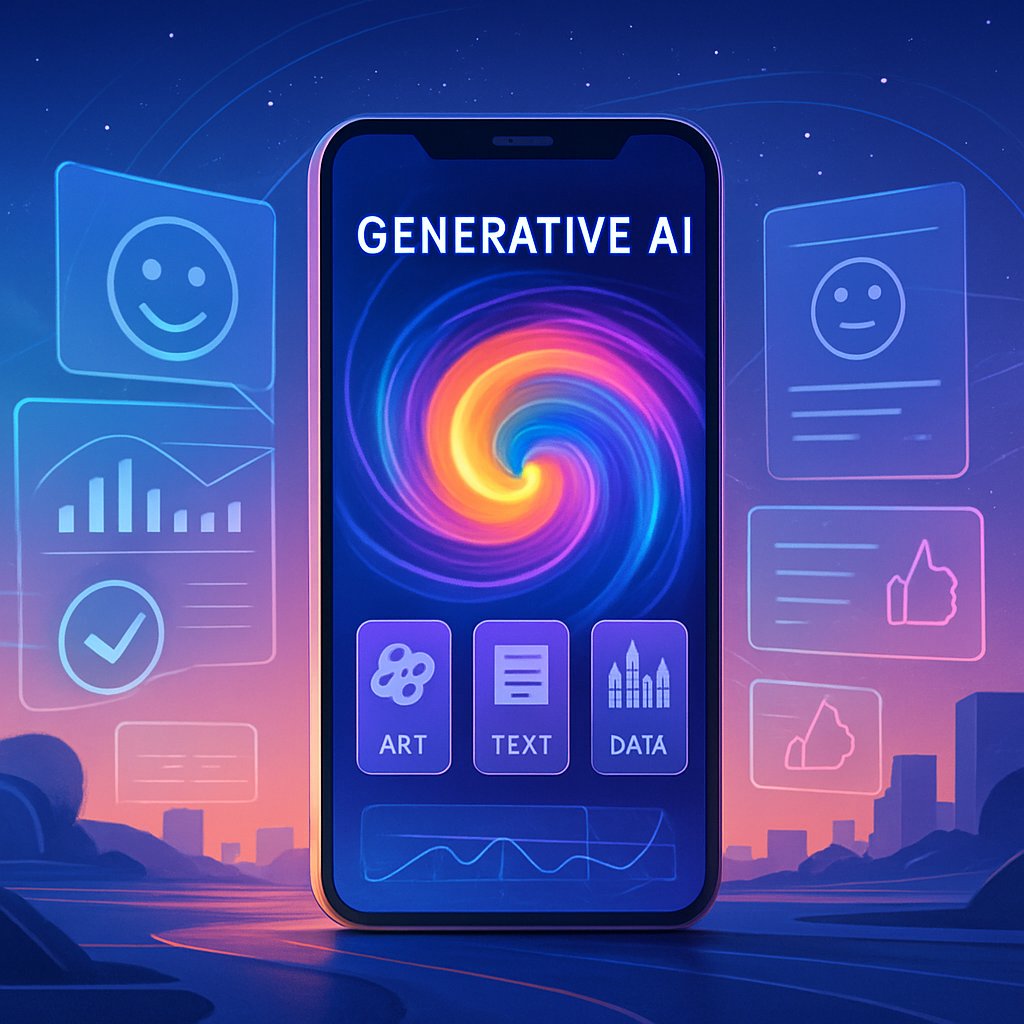Unlocking User Insights: How People Really Feel About Generative AI Apps
Generative AI has taken the mobile app landscape by storm, especially since the debut of ChatGPT in 2022, which amassed a staggering 7.4 million downloads in just ten days! Everyone seems to be keen on using these AI-powered marvels that can whip up content, create art, and enhance productivity in ways we didn’t think possible. But amidst this crescendo of enthusiasm, how do users really feel about these generative AI apps? What challenges do they face, and what opportunities lie ahead for developers?
In this blog post, we dive into a fascinating study that analyzed over 676,000 user reviews of generative AI apps from the Google Play Store, revealing insights about user experiences and expectations that could signal the future direction of app development. Buckle up; it's going to be an insightful ride!
Understanding the Users: The Heart of the Study
The Rapid Rise of Generative AI
Generative AI, abbreviated as Gen-AI, encompasses AI systems that can generate content—be it text, images, audio, or even video. Unlike traditional AI, which relies on historical data to predict or analyze, Gen-AI can create original outputs by synthesizing information from various sources. This is largely made possible by advanced tools known as large language models (LLMs). When integrated into mobile applications, these models can craft incredibly personalized experiences by providing real-time and context-aware interaction.
Methodology: Sifting Through the Noise
The researchers designed a systematic approach known as SARA. This four-phase methodology comprises:
- Selection: Identifying relevant Gen-AI apps.
- Acquisition: Gathering user reviews from the Google Play Store.
- Refinement: Cleaning the data to remove non-informative content.
- Analysis: Using LLMs to extract topics and sentiments from user reviews.
By effectively filtering out irrelevant data, they achieved an impressive 91% accuracy in topic extraction, allowing for a robust analysis of user feedback.
What Users Are Saying: Prominent Topics and Insights
User Sentiment: The Good, the Bad, and the In-Between
The study identified the top 10 topics that users brought up in their reviews. Here are some highlights:
AI Performance: Many users praised the performance but also expressed concerns over the AI’s ability to understand nuanced prompts. A significant 79% of users rated this positively, but 16% mentioned limitations in AI understanding, which is crucial for complex requests.
Content Quality: While 67% of reviews were positive about Gen-AI outputs, 33% voiced concerns about the accuracy of generated content, especially in creative tasks, indicating that users expect high-quality, reliable outputs.
Content Policy & Censorship: Many users raised concerns about overly strict content filters that blocked innocent creative expression, as well as a demand for more transparent policies regarding AI-generated content ownership.
This feedback shows a community of users who are not just consumers but active participants in the evolution of these technologies, offering constructive criticism that can lead to improved user experiences.
Evolving User Expectations Over Time
Interestingly, user expectations appear to have evolved over time. Early adopters tended to overlook imperfections, basking in the novelty of Gen-AI features, while later users adopted a more critical perspective. This shift reflects how familiarity with the technology has led to increased scrutiny and higher standards. For instance, the average rating for Content Quality has actually declined over time, demonstrating that as users grow accustomed to AI capabilities, their expectations for quality become more demanding.
Real-Life Applications: What Does This Mean for Developers?
Bringing User Feedback to the Forefront
Here’s where things get practical. As a developer or researcher looking to refine Gen-AI apps, consider these actionable insights drawn from user reviews:
Prioritize AI Understanding: Focus on improving the AI’s comprehension of user prompts to enhance user interactions—after all, an AI that misunderstands is a source of frustration, not satisfaction.
Quality Over Quantity in Content: While users generally enjoy the content generated, addressing the shortcomings revealed in their feedback could enhance their trust and reliance on these tools.
Adapt Censorship Mechanisms: Implement adjustable censorship options to cater to diverse user needs—this could be a game changer in promoting user trust while ensuring platform safety.
Encourage Communication with Users: Leverage user reviews not just as feedback but as a collaborative tool for improvement. Create channels for users to articulate concerns directly and involve them in beta testing new features.
Training Algorithms with User Sentiments
By utilizing the extracted topics and sentiments from the reviews, developers can train algorithms designed to adapt the platform better to meet user needs and even flag issues before they become widespread. This proactive approach can save time, resources, and reputation.
Key Takeaways
User Feedback is Gold: Engaging with user reviews can provide invaluable insights, helping developers refine features and enhance overall experience.
Growing Expectations: As users become accustomed to generative AI capabilities, their standards rise. Developers must adapt and innovate continually.
AI Communication Matters: Improving how AI comprehends and responds to user input can be a vital area for developers to focus on.
Modular Features: Allow users to adjust censorship settings and maintain transparency in content moderation to enhance user satisfaction.
Stay Collaborative: Foster a cooperative relationship with users, inviting feedback and actively involving them in shaping future app functionalities.
In a world where AI becomes increasingly intertwined with our daily lives, understanding and responding to user needs will be key in creating more effective and user-friendly generative AI applications. As we continue to navigate this dynamic landscape, let’s embrace the journey of co-creation with users—it's a definite win-win!

